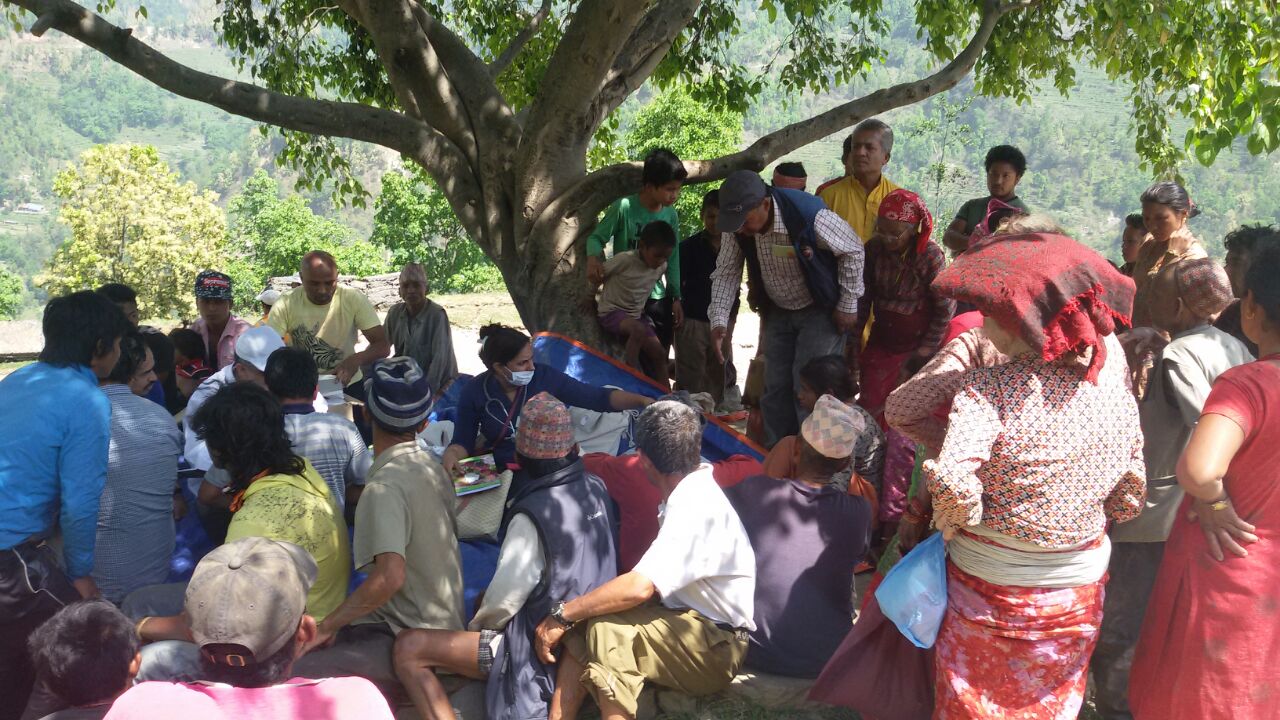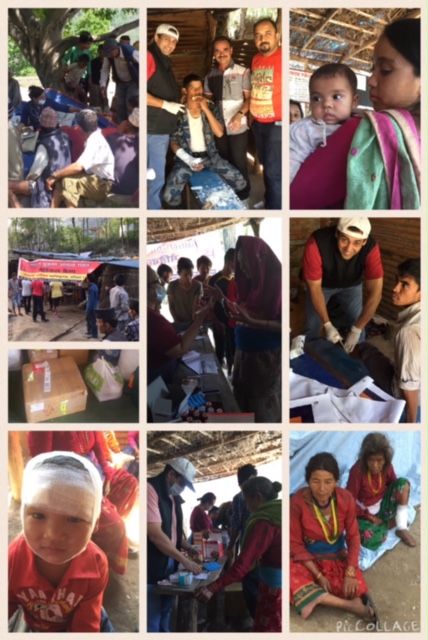
As news of the 7.8 magnitude earthquake in Nepal broke on 25 April, we, a team of seven specialist doctors and two non-medical volunteer relief workers, made up our minds to go with our instincts and whatever else we could put together at short notice, to offer voluntary aid to the disaster-struck nation. We decided to go to Sindhupalchowk, the worst-hit area of Nepal and thought we were prepared, or at least at that point we did. The surgeons carried their basic instruments, suture material, spirit, gauze, bandages; the paediatricians had their antibiotics and syrups, the orthopaedic surgeon had plasters and splints and so on.
Our work actually started at home as we struggled to convince Air India to let us carry the relief material for free, but this was not allowed and after a discount, we were made to pay Rs 87,000. We landed in Kathmandu on April 30 and though things didn’t look too bad from the flight, by the time we reached Sindhupalchowk in a rented school bus, we knew that the nearly 500 kilos of relief material we had put together was going to run short. A cruel irony lay in the contrast between the eerily beautiful landscape and how nearly every human habitation we passed was flattened out.
We were stationed at Lamosangu, Sindhupalchowk at a small armed Nepal police base. Little did I know that the nightly after-shocks (running up to about 5 on the Richter Scale) that I would experience, would also further damage the house our team slept in. Every night we would run out of the guesthouse at least once, when we felt the tremors.
The first thing that hit us was the realisation that we had not thought beyond injuries and first-aid -- heart-patients, diabetics, epileptics and others were also without essential drugs. Secondly, we were operating in urban-city mode in a place that resembled a war zone. We learned to bribe patients with the limited food supplies we had to keep them back for necessary procedures. Except that the meals were not easy to come by, even for the Army mess that tried to supply us with a bucket of dal and rice for the first few days.
The area we were in had received little relief in the crucial days immediately after the quake. We saw relief material stuck at Kathmandu airport on account of red tape issues. Our attempts to speak to UN officials on our return to share specific learnings from our visit were met with bureaucratic indifference. This left me personally disappointed with the UN approach and attitude. Shouldn’t they be using all the help being offered, especially from a group of people with a specific skill set?

Patients at the relief camp
What helped us was the unexpected company of Kathmandu comedian Manoj Gajurel, who also helped us organise the trip. He was a celebrity, but would crack jokes and indulge us with banter at the camp, lightening the mood and easing the tension. He also served as a useful interpreter, as did a young sociologist from Kathmandu - a girl named Jyoti Mainaly who simply moved into our crowded, tiny dormitory, managing without a sleeping bag in the cold.
A woman turned up at the camp complaining of body ache and the surgeon in charge handed her over to me, unable to diagnose the issue. It turned out that she had lost her young child and her house and was now wondering how to scrape together enough to survive. Despite dealing with suffering, pain and death on a daily basis, the senior surgeon with me had to leave the area for a while to compose himself.
But soon we managed to get into a groove - we were seven doctors treating nearly 400 patients every day, so there was no question of sticking to our specialities. Infact, the physicians and I landed up assisting in minor surgeries. We soon learnt to dabble a bit in Nepali and evolved a set of fast, diverse questions to segregated cases and acted on instinct so as to see maximum patients in a day. After all, these people had walked miles to come to our camp and we had to see them by 4 pm so that they would have enough time to go back to their villages before nightfall.

We saw immense suffering, we shook in unzipped sleeping bags as the earth quaked under us every night, but we were glad that we could be of help. Having returned, I am unable to sleep or smile or function properly, atleast for now, after the things I saw and heard. Perhaps I am a textbook example of a secondary victim, the traumatised relief worker. But I want to record our lessons there and remember the extraordinary resilience of the Nepali people. Tiny children bore painful procedures without flinching or crying. Our hotel manager waived off the charges of our one-night stay as we exited Kathmandu, even as he showed me the list of cancellations on his roll. In Kathmandu, we received tremendous logistic support from a Haridvar-based social organisation called Gayatri Pariwar. Relief workers are still facing bureaucratic hurdles even as their supplies are stuck. There is no question that Nepal is in desperate need of aid and that it is our moral duty as doctors to do whatever we can.
Our team consisted of:
Psychiatrist: Dr. Vishal A. Sawant
Surgeon: Dr. Sanjay Sonar and Dr. Amit Thadani
Orthopaedician: Dr. Ambarish Saraf
Physician: Dr. Dhiren Kothari, Dr. JayshriNarsimhan and Dr. GauriBalani
Paediatrician: Dr. Anjana Thadani
Non Medical Volunteers: Tasneem and Jayesh
The author is an MD and Head of Dept of Psychiatry at Dr. RN Cooper Municipal Hospital. He is also co-founder and director of Mind Care Institute and Consultant Psychiatrist at Asian Heart Institute, Guru Nanak Hospitaland and Dr. B. Nanavati Hospital